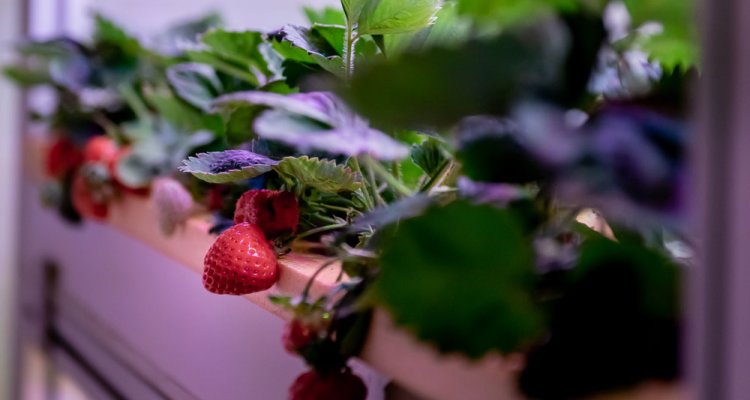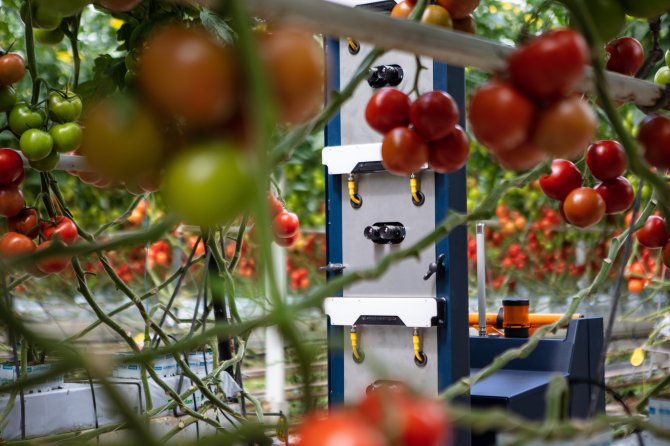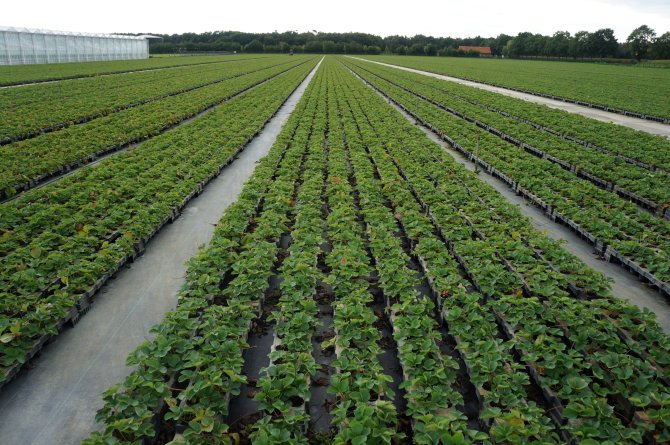
Project
Modelling the future of plants
An ambitious new project is looking to predict and model the complex traits in fresh products that are constantly changing, using deep-learning and machine-learning approaches. The project brings together a multi-disciplinary team of Wageningen researchers from Plant Physiology, Machine-Learning, and Agro-Food Robotics, and four key international business leaders: HortiKey International BV (NL), ioCrops (KR), Tungsram Operations Kft. (HU), and Visser Horti Systems BV (NL) with its aligned partner Corvus drones (NL).
Automation to help make informed decisions
Agri-food product characteristics are affected by many different types of factors. Whether that is due to environmental factors like weather, pests, nutrient input, storage, to simply ageing or maturing and lying on our kitchen counters.
Project lead Aneesh Chauhan, senior scientist and expertise leader of Computer Vision and Robotics at Wageningen University & Research: “We are addressing three different domains in which plants are grown. In the first case a greenhouse, next an open field, and lastly a vertical farm. If a similar type of technology could be applicable to these three different domains, we would demonstrate that the use of these technologies goes beyond just solving one problem. So the set of technologies that we develop in this project could become something to be used across domains, across the entire agricultural and horticultural sector.”
There are many reasons why the agri- and horticultural sector is moving towards automation. Efficiency, of course, and optimal usage of resources to grow as sustainably as possible. But what has become even more clear during COVID times, is the scarcity of people performing high-demanding, but repetitive and less rewarding manual tasks. A problem that is only going to become more apparent in the coming decades as the world population increases fast and the number of farmers and growers decreases. How are we going to feed all these people?
According to Aneesh, in the end it all comes down to the ability to make informed, precise decisions at the right moment: the key to the agriculture of the future.
Three practical challenges
The sense of urgency coming from the market has been there for a long time. Modeling changing traits of fresh products is an extremely challenging issue.
“What we are trying to do is convert this very difficult problem into a practical problem, so it becomes tangible. To translate those real industry challenges and try to solve them with the latest technological innovations at Wageningen University & Research,” says Aneesh.
To do so, the project is divided into three work packages, running 3-4 years.

Transferring knowledge between cultivars for yield prediction
HortiKey International presented a clearly defined problem: they want to use their autonomous robot to predict the yield capacity of a greenhouse that said robot navigates. HortiKey have worked with Wageningen before on one specific variety of tomato to this end. But there are many different cultivars, ranging from large trusses of tomatoes to small varieties like cherry tomatoes.
“How can we apply the models we built to all these different varieties, without having to go through the incredible effort of data collection and building new models for each cultivar? We are looking at techniques that can reuse what they have learned before, and transfer that knowledge to a new domain, any new cultivar. So that you can use that prior knowledge and apply it to something as quickly as possible,” Aneesh says.
Determining the growth stages of strawberry plants using drones
The second scenario stems from Visser Horti Systems, collaborating with a progressive farmer in the south of the Netherlands, together with Corvus Drones. One of the biggest advantages of drones is that you can fly over a large area. So wouldn’t it be great if you could make a flight and gather useful information that tells you something about plant growth? This idea brought the companies to Wageningen.
Aneesh: “The growth stages of a plant are extremely complex traits. Each plant grows differently, especially outdoors, where they are exposed to the elements, and one cannot guarantee that all plants receive the same amount of nutrients. There is a lot of variation and a giant question looming over us: can we use technology to tell the growth stage and changing quality of plants? If we can, that will offer huge value later on in the supply chain, when plants start to produce fruit, for example.”
Using drones to collect large scale data of some 10s of thousands of strawberry plantlets grown outdoors, the team are exploring machine-learning methods to make quick quality assessments and determine the growth stage and various quality indicators of the strawberry plants.

Pioneering sensing technologies in vertical farming
Last but not least, two companies came together: ioCrops and Tungsram Operations Kft. Tungsram operates its own vertical farming experimental facilities and raised an open question for the researchers: what do we need to measure to understand how well our plants are growing?
Being a much newer growing system, the team need to reflect on what growth means in vertical farming conditions and if the existing sensors can actually measure it. The research will be more explorative in the first couple of years, surveying many different types of sensing technologies and traits of interest to vertical farming. “We will build hardware infrastructure to collect sensor data and finally build AI models to predict the different growth stages in the plants. When we have identified traits to be measured, and we can predict them well enough, we will compare vertical farming production to conventional farming. We hope to demonstrate that under the much more controlled conditions of a vertical farm, we can achieve higher quantity and higher quality produce than in the conventional systems,” Aneesh explains.
Data collection
All three work packages started running on the 1st of July 2021, and are gaining traction. In the coming six months, the researchers will focus on data collection and start the first modeling processes. The indoor yield prediction for tomatoes will see prediction happening on device, as the researchers work on hardware to deploy the developed models.
The team is finishing up their first cycle of data collection from the drone flights over the strawberry field, which started back in July. Aneesh: “We have been collecting new images every two weeks: data that illustrates the different growth stages of the plants. The plants will go into cold storage in mid-November, end of December. We will be working intensely with the data, trying to understand the plant growth and giving meaning to that.”
The vertical farm side is currently focused on surveying the sensing technologies that are relevant to the plant traits they want to measure in this domain.
Bridging the gap between academia and practice
It is not uncommon that when researchers develop a high-tech solution, there is a huge knowledge gap between them and the end users they have actually been developing for. Aneesh: “We realized that if that gap remains, the technology you developed may not be as useful to your client in the end. To make sure this will not be the case, within this project’s framework we agreed to have yearly sessions together. A kind of courses with and for the end user, to share our developments with them and demonstrate how the technology works and why.”
The team hopes to lay the groundwork for technologies that, like the products they model, will continue to change and mature, and lead to solutions that will help make better decisions in the face of various agri challenges. Aneesh: “These challenges are very broad and must be looked at from many different perspectives. But this is definitely one piece of the puzzle.”